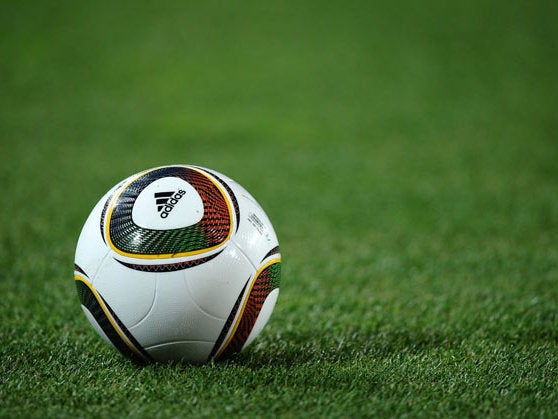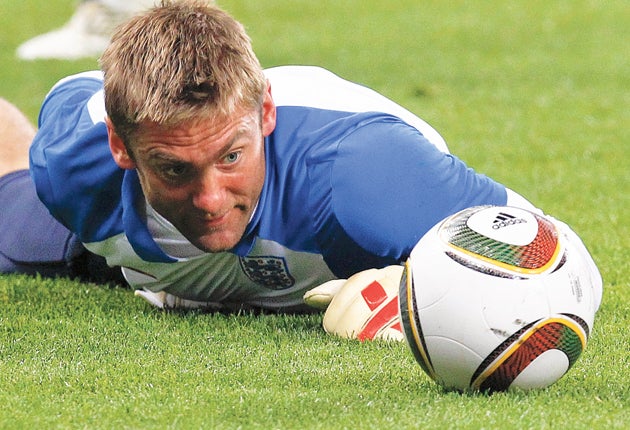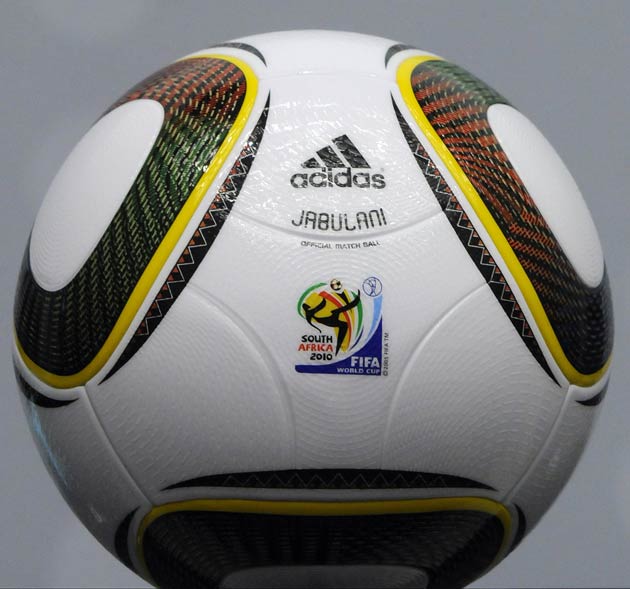Adidas Jabulani: The story of the 2010 World Cup’s uncontrollable football remembered a decade on
Callum Rice-Coates looks back at the football that swooped and swerved through the South African air – much to the fury of the World Cup stars trying to control it


“The football is horrible,” said Julio Cesar. “It is like one of those you buy in the supermarket.”
Brazil’s goalkeeper was sick of it: sick of the movement on the ball, the way it dipped and swerved and appeared to defy the laws of physics. At the last moment its path might change, as if taken away by a gust of wind.
For goalkeepers, and some outfield players, it was jarring. The Adidas Jabulani, famous for its controversial use at the 2010 World Cup, was not like other footballs. It did not do what normal footballs did. And players in South Africa quickly noticed that something was off.
“The new model is absolutely inadequate and I think it’s shameful letting us play such an important competition, where a lot of champions take part, with a ball like this,” said Gianluigi Buffon.
“For sure the guy who designed this ball never played football,” added Brazil forward Robinho. “But there is nothing we can do; we have to play with it.”
David James, the England goalkeeper, was more direct in his criticism. “The ball is dreadful,” he said. “It’s horrible.”
The only player who seemed to really enjoy the wild, uncontrollable nature of the Jabulani was Diego Forlan. His ferocious long shots were a feature of the tournament and helped Uruguay to the semi-finals.
Forlan had tamed the Jabulani, and used it as a weapon, but he was the exception to the rule. Most players struggled, and the general consensus was that the new ball led to lower quality matches, particularly throughout the group stages.
What was it about the Jabulani, though, that proved so different, so divisive?
In 2010, Rabi Mehta, an aerospace engineer with Nasa, did a series of analyses on the movement of the ball using wind tunnel data.
“The issue with the Jabulani ball actually started in 2006 when the Teamgeist ball was introduced for the World Cup in Germany,” Mehta tells The Independent. “Prior to 2006, the traditional soccer ball had 32 pentagonal panels with internal stitching. The Teamgeist had 14 bonded panels which resulted in a smoother surface.
“When one measures the drag force on a ball, the force is relatively high at the lower speeds, but at some critical speed, the drag drops suddenly. This critical speed is determined by the roughness on the ball. It turns out that the maximum knuckling effect occurs around this critical speed. For the traditional 32-panel ball, this critical speed was around 35mph. With the smoother surface on the Teamgeist ball, this critical speed increased to about 45mph.

“In my opinion, this critical speed was closer to the average speed encountered in a World Cup match. Hence there were justified complaints from the players that the ball tended to knuckle more than the traditional ball.
“So for the 2010 World Cup, Adidas introduced the Jabulani with 8 bonded panels and aerodynamic grooves and ridges. I am assuming that the goal of the change in design was to decrease the critical speed. But it turned out that the critical speed for the Jabulani ball was around 55mph, even higher than the Teamgeist. So that’s why we had lots of complaints from the players.”
Put simply, the new design led to an increase in speed, which in turn resulted in a knuckle-ball effect: volatile swerves and swoops caused by the asymmetry and aforementioned “roughness” of the ball.
Mehta pointed out, too, that the high altitude of stadiums in South Africa affected the flight of the ball. The air density was lower, and that meant less drag and less lift.
For players and fans, though, the science behind the ball’s anomalous behaviour was not immediately clear. They were judging by eye. And plenty were not pleased with what they saw.
Craig Johnston, the former Liverpool midfielder and designer of the Adidas Predator ball, was particularly aggrieved. “Whoever is responsible for this should be taken out and shot for crimes against football,” he wrote in an open letter to Fifa, a copy of which was acquired by The Daily Telegraph shortly before the 2010 World Cup final.
It was clear to most observant viewers of the tournament that shots and crosses and long balls were going astray more often than would normally be expected. Stats from Opta confirmed that there were more misplaced passes up to the quarter-finals than in any of the previous four World Cups.

“By my calculations we have been denied at least 10 goals that were not scored in this World Cup so far, because of the erratic and unstable flight of the Jabulani football,” Johnston said. “Let me put it this way. If they weren’t using the Jabulani, then there would have been no refereeing error over Frank Lampard’s goal [for England against Germany].
“Because if it had behaved like a normal ball, that shot would have gone under the cross bar. And by the way, I’ve analysed it and Lampard’s second half shot that hit the crossbar would have gone in too. I’m not saying England were cheated out of it, they may have lost anyway, but they were denied two goals. By that ball.”
Fifa stood by the design, insisting that adequate tests had been done. Nicolas Maingot, head of Fifa’s media, waved away complaints, backing the work of designers at Adidas.
Thomas Schaikvan, head of global public relations at Adidas, was equally defensive. He cited previous tournaments when goalkeepers had, after the first few games, invariably moaned about the movement of the ball. It was, Schaikvan said, just a case of getting used to it.
That did not really happen, though. “This ball doesn’t reward the craft of the player,” Johnston added. “Sure, the brighter players have worked out how to use it pretty quickly. Take Forlan. Against Ghana and Holland he just whacked the ball as hard as he could into the centre of the goal knowing the erratic nature of the way it flies would deceive the keeper.
“This is a ball that encourages prehistoric football. This ball is nervous, flighty, it does not reward clever play. Football is all about texture, flavour and colour That has been taken away by a ball sanctioned by who? Fifa and its sponsors. They may have been rewarded by making tens of millions of dollars profit, but the result is they have removed the art and craft from the game.”
There is no categorical evidence to suggest that the design of the Jabulani had a negative impact on the football played in South Africa. There are few, though, that consider 2010 amongst the most entertaining, high quality World Cups, despite the undoubted ability of the players and teams involved.
That a design similar to that of the Jabulani has not been seen at the highest level since is telling, too. “Since then, the Brazuca ball which was introduced for the 2014 World Cup had six bonded panels, but with deeper seams and pimples,” says Mehta. “This resulted in the critical speed dropping back to around 35mph and no complaints from the players. The Telstar ball used in 2018 also had six bonded panels with longer but shallower seams and pimples. The aerodynamic performance for this ball was similar to that of the Brazuca, and again there were no complaints from the players.”
Had the Jabulani been designed differently, we might, perhaps, reflect on the 2010 World Cup with an entirely different perspective. Forlan’s swerving free kick might not have deceived Ghana goalkeeper Richard Kingson and the Black Stars might have reached an historic semi-final. Lampard may not have been denied a goal against Germany, and England’s defeat might have been a little less humiliating.
Sporting history is defined by the finest details. Few consider the aerodynamics, the drag and speed of the ball before a major tournament. But all of these elements play a part. For Adidas, getting the design just right is important.
“Let us see,” says Mehta, “what they come up with for the 2022 World Cup.”
Join our commenting forum
Join thought-provoking conversations, follow other Independent readers and see their replies
Comments